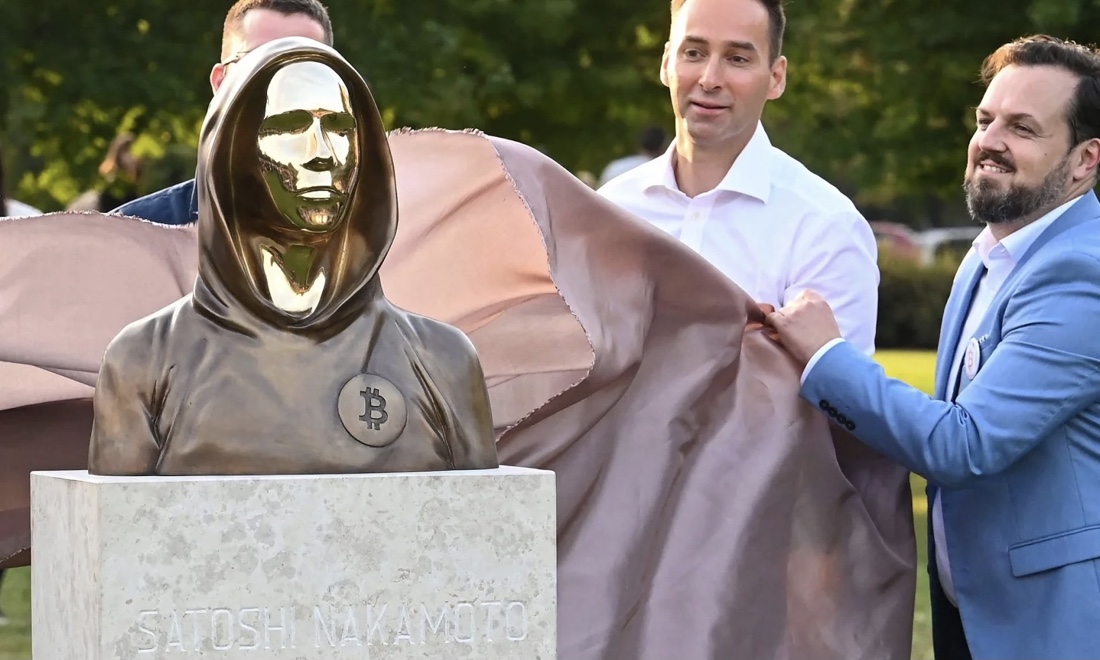
In an age in which it is hard to be anonymous, the identity of the cryptocurrency’s inventor remains a mystery.
Thirteen years ago a person or group using the name Satoshi Nakamoto released a paper describing a new software system called bitcoin. Today bitcoin is worth more than $1 trillion and has sparked a phenomenon that, its proponents believe, might rewire the entire global financial network.
There is a mystery at the heart of bitcoin, however. Who actually is Satoshi Nakamoto?
On Oct. 31, 2008, Satoshi Nakamoto sent a nine-page paper to a group of cryptographers outlining a new form of “electronic cash” called bitcoin.
At the time nobody cared about Nakamoto’s identity. Most of the people in that group were skeptical of the bitcoin idea itself.
Cryptographers and developers such as Hal Finney, Nick Szabo, David Chaum and Wei Dai had been trying for more than a decade to develop an electronic version of cash. All of them had failed, for a variety of reasons.
On Jan. 9, 2009, Nakamoto launched the bitcoin network. Mr. Finney was one of the few who was intrigued by it, and in the early weeks the two worked remotely to get the network running. The first bitcoin transaction went from Nakamoto to Mr. Finney.
For about two years, as bitcoin slowly grew, Nakamoto wrote on message boards and privately exchanged emails with developers. In December 2010, Nakamoto stopped posting publicly, and stopped talking with developers in 2011. Nakamoto passed leadership of the project to Gavin Andresen, a software developer.
Do we know anything about Nakamoto as a person?
Not really. In public messages, and even in private messages that were later released, Nakamoto never spoke about anything personal. Nothing biographical, or about the weather, or things happening locally. Everything was about bitcoin and its code.
Nakamoto used two email addresses and one website. The identity of the person who registered them is blocked.
There is no other public information. In an age in which it is hard to be anonymous, Nakamoto remains a ghost.
But isn’t Nakamoto rich?
There are about one million bitcoins that were “mined” in bitcoin’s first year that have never been moved.
Today those bitcoins are worth about $55 billion. That would make Nakamoto one of the 30 richest people in the world, according to the Forbes real-time billionaires list.
It is assumed that those one million bitcoins are controlled by Nakamoto—and only Nakamoto. To move them one needs to have the “private key”—a long, unique string of letters and numbers that controls access.
The person moving them would have a very strong claim on being Nakamoto.
So why haven’t they been sold?
In the early years, the cryptocurrency community assumed that Nakamoto remained anonymous and left those bitcoins untouched, mainly out of fear. It didn’t seem unreasonable that the inventor of bitcoin could be arrested. In recent years, though, most governments—China being the big exception—have accepted bitcoin to varying degrees.
It has been a decade since Nakamoto disappeared. It is possible bitcoin’s creator died without giving anybody else the private keys. It is also possible that Nakamoto lost the keys and can’t move the bitcoin.
Somebody must be Nakamoto, though, right?
Yes, and over the years virtually anybody who did work even remotely similar to bitcoin—such as Mr. Finney, who died in 2014, and Mr. Andresen—has been pegged as Nakamoto. All have denied it, and there hasn’t been evidence to prove otherwise.
In 2014, a group of students and researchers at Aston University in Birmingham, England, carried out a linguistics analysis and concluded that Mr. Szabo was most likely to be Nakamoto. Others have claimed he is Nakamoto as well. Mr. Szabo has denied the claim.
Who is Craig Wright?
Mr. Wright is an Australian programmer living in London who in 2016 claimed to be Nakamoto. His claims were quickly dissected, and rejected, in the bitcoin community. He pledged to prove he was Nakamoto by moving some of those early bitcoins. To this date, he hasn’t done so.
In recent years, Mr. Wright has tried to litigate his claim. He has filed for patents on bitcoin’s software, even though it was released as an open-source project, and sued a podcast host who publicly ridiculed his claim for defamation.
Will the Florida lawsuit reveal Nakamoto’s identity?
Mr. Wright himself is being sued by the family of a deceased colleague named Dave Kleiman. The suit claims that Messrs. Wright and Kleiman developed bitcoin together as part of a business partnership and that Mr. Wright owes Mr. Kleiman’s family half of those one million bitcoins.
If a jury finds the two did create bitcoin together, Mr. Wright could be legally compelled to sell some of those bitcoins. But until he does so, most people in the bitcoin world will continue to dismiss his claims.
And until somebody moves those bitcoins, it isn’t likely that anybody will be accepted as bitcoin’s true creator.
By Paul Vigna @ wsj.com
Related
Source: Vietnam Insider
